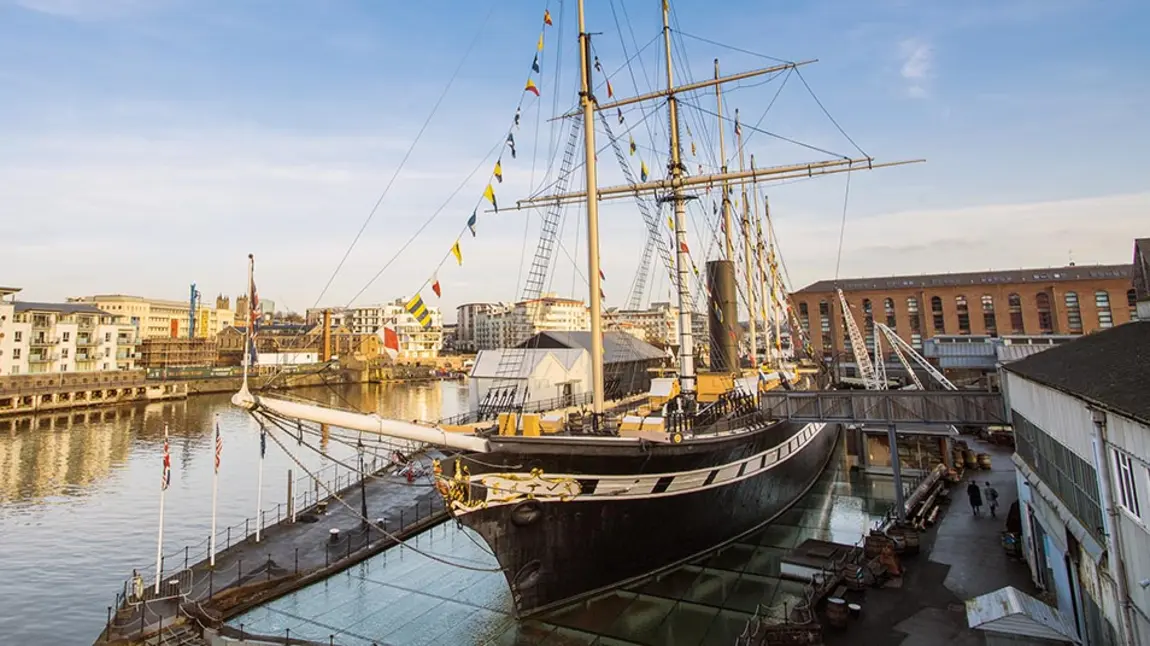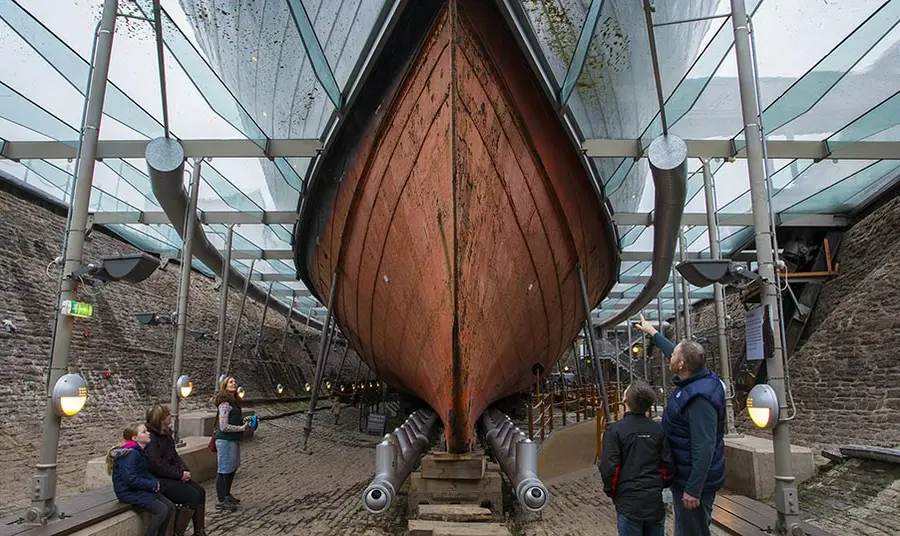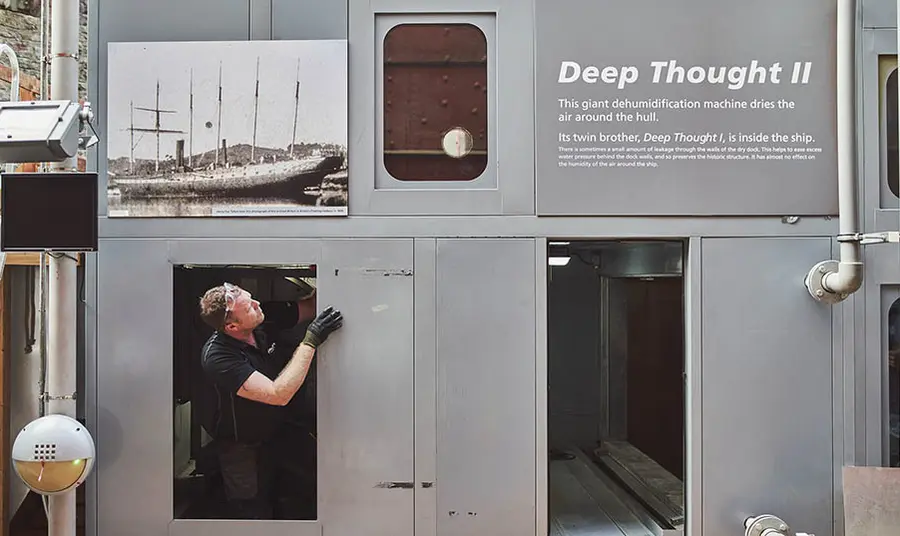Case study: SS Great Britain – Voyage to Carbon Neutral

The project
Brunel’s SS Great Britain was launched in 1843 and is one of the most important historic ships in the world. During its long life it was a luxury transatlantic liner, carried emigrants to Australia and took cargo between the UK and America.
In 1970 the SS Great Britain was salvaged and returned to the original Bristol dry dock where the ship had been constructed, creating a historically important site.
The combination of early raw iron materials, Bristol's damp climate, and the ship's life at sea meant that the original iron was corroding much faster than anticipated. Between 1997 and 2005 a unique conservation system was developed to conserve the ship as a piece of engineering and global communication history.
The Voyage to Carbon Neutral project has drastically reduced the conservation system’s energy consumption and CO2 emissions, paving the way for carbon-neutral conservation by 2030.
The organisation
The SS Great Britain Trust works to preserve the ship and Brunel's legacy. Support from visitors, members and funders enables people to discover this maritime heritage, including through a ‘Global Passenger Stories’ trail and Victorian Christmas weekends.
Since 2018 the trust has been dedicated to reducing its impact on the environment. As a conservation charity and a large visitor attraction they believe they must both make a difference directly as well as inspire and advocate for change.
The results
The existing dehumidifying system, which uses a lot of energy, keeps the environment around the most vulnerable iron parts of the ship dry enough to prevent rusting.
Tasked with lowering the system’s very large carbon footprint, the Voyage to Carbon Neutral project has reduced energy consumption and associated emissions by around 25% across the whole system, and by more than 40% on key individual components. The total carbon dioxide emissions have reduced by more than 150 tonnes per year.
Nicola Grahamslaw, Ship’s Conservation Engineer at SS Great Britain Trust said: “I really enjoy being able to see for the first time how something works properly. You see something just working away but when you actually start to pick it apart you understand how all the bits work together.”
A large part of the heritage sector uses climate control systems to conserve objects. Voyage to Carbon Neutral took a new approach and what they have learned through making their system more energy-efficient can potentially be applied in other museums.
The award
The SS Great Britain Trust was announced as Sustainable Project of the Year joint winner at the Museums + Heritage Awards in May 2023, sharing first place with The Food Museum’s Hedgerow project.
The judges were impressed by this project’s cutting-edge technological development with strong potential for wider sector impact.
The future
The trust's overall objective is to completely decarbonise their conservation systems.
Research initiatives will be carried out to investigate the factors impacting their energy demand, and they will continue to collaborate with universities on various aspects of the project.
Top tips
The SS Great Britain Trust shared their top tips with us on how to deliver a successful project:
- find the balance between doing the easy and obvious things straight away, and collecting information and learning about your environmental impact to take more informed action
- get stuck in – you can learn a lot more by doing and taking a hands-on approach
- challenge things and ask the obvious questions – it’s easy to assume the obvious questions have already been asked, but that may not always be the case




